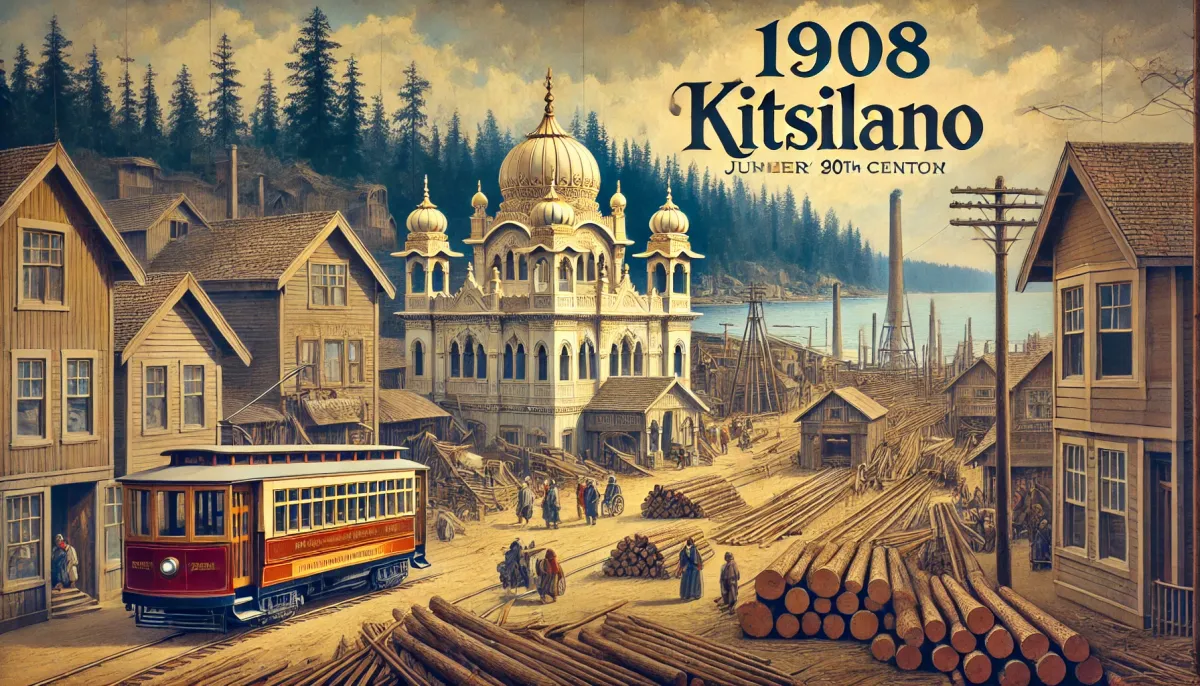
Part 3 of 5
In 1908, Kitsilano made history by becoming home to Canada’s second Sikh temple, marking a significant milestone in the history of South Asian immigration and settlement in British Columbia. The establishment of the temple reflected the growing presence of Sikh settlers who had arrived in the early 20th century, drawn by employment opportunities in the booming logging industry and nearby sawmills.
The temple, or gurdwara, provided more than just a place of worship; it became a central hub for the Sikh community, fostering cultural and social cohesion. For the early settlers, many of whom faced discrimination and social isolation, the gurdwara was a sanctuary where they could connect with their heritage, practice their faith, and support one another. It played an essential role in preserving Punjabi culture and Sikh traditions in a new and challenging environment.
Located in Kitsilano, the temple served a diverse workforce contributing to the development of Vancouver’s economy. These early pioneers worked in demanding conditions in the region’s sawmills, helping supply timber to local and international markets. Despite facing systemic barriers, they laid the foundation for future generations of South Asians in Canada.
The opening of the temple in Kitsilano underscored the resilience and determination of the Sikh community. It symbolized their commitment to maintaining their identity while contributing to their new homeland. Today, it stands as a reminder of the rich cultural diversity that has shaped Kitsilano and Vancouver as a whole.
Tags: #KitsilanoHistory #SikhTemple #SouthAsianHeritage #VancouverHistory #CulturalDiversity
Tags: #WBN News - Kitsilano Edition #Karalee Greer #Kitsilano History #Vancouver Growth #Urban Expansion #Transportation Impact #Kits #Kitsilano #Immigration #Local News #Cultural Diversity

